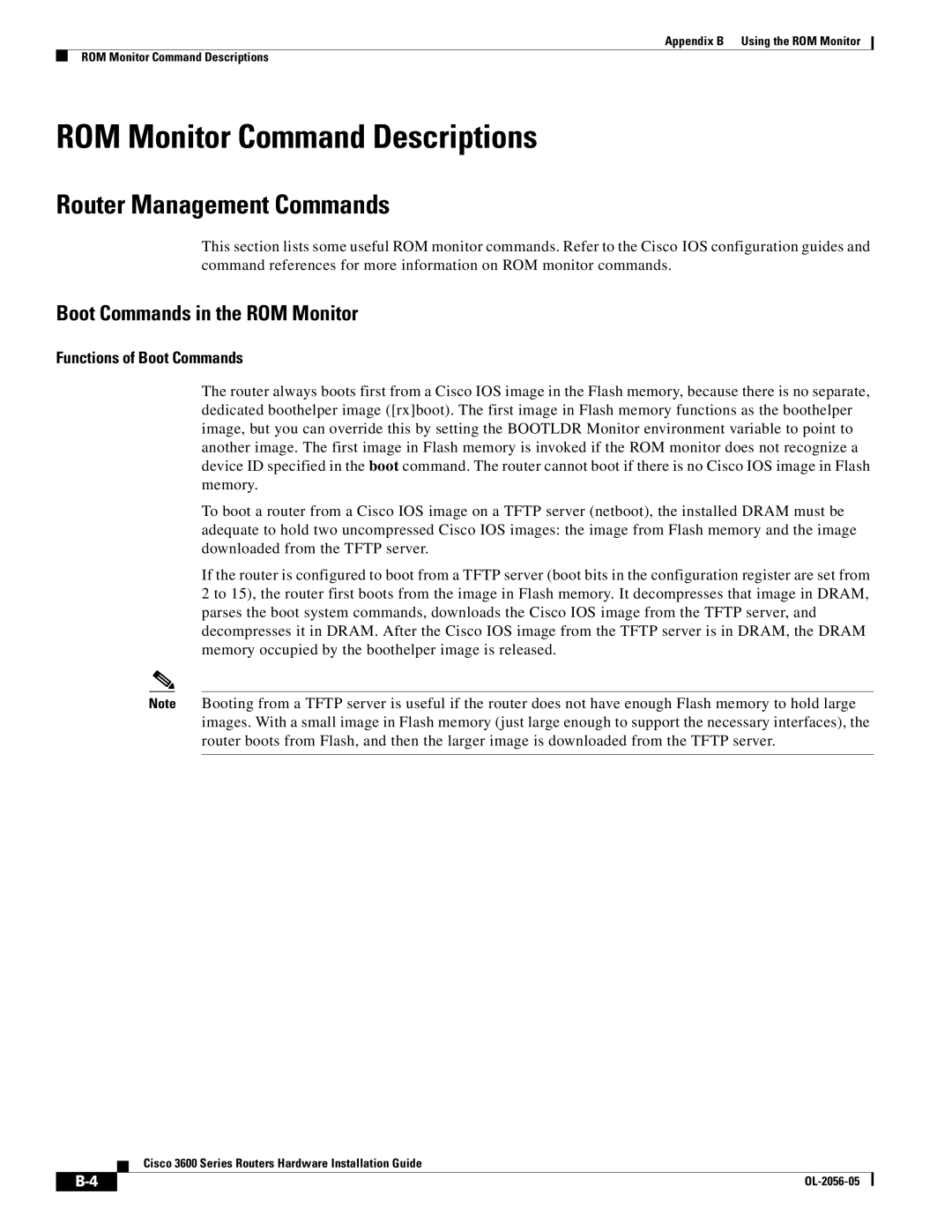
Appendix B Using the ROM Monitor
ROM Monitor Command Descriptions
ROM Monitor Command Descriptions
Router Management Commands
This section lists some useful ROM monitor commands. Refer to the Cisco IOS configuration guides and command references for more information on ROM monitor commands.
Boot Commands in the ROM Monitor
Functions of Boot Commands
The router always boots first from a Cisco IOS image in the Flash memory, because there is no separate, dedicated boothelper image ([rx]boot). The first image in Flash memory functions as the boothelper image, but you can override this by setting the BOOTLDR Monitor environment variable to point to another image. The first image in Flash memory is invoked if the ROM monitor does not recognize a device ID specified in the boot command. The router cannot boot if there is no Cisco IOS image in Flash memory.
To boot a router from a Cisco IOS image on a TFTP server (netboot), the installed DRAM must be adequate to hold two uncompressed Cisco IOS images: the image from Flash memory and the image downloaded from the TFTP server.
If the router is configured to boot from a TFTP server (boot bits in the configuration register are set from 2 to 15), the router first boots from the image in Flash memory. It decompresses that image in DRAM, parses the boot system commands, downloads the Cisco IOS image from the TFTP server, and decompresses it in DRAM. After the Cisco IOS image from the TFTP server is in DRAM, the DRAM memory occupied by the boothelper image is released.
Note Booting from a TFTP server is useful if the router does not have enough Flash memory to hold large images. With a small image in Flash memory (just large enough to support the necessary interfaces), the router boots from Flash, and then the larger image is downloaded from the TFTP server.
Cisco 3600 Series Routers Hardware Installation Guide
|
|
| |
|
|
